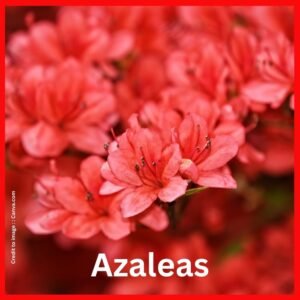The Saraswati River—a revered feature of Vedic lore—was once a mighty Himalayan-fed waterway mentioned extensively in the Rigveda. Over millennia, it dried up, but recent archaeological and geological discoveries have revived interest in its existence and significance. This article explores its origins, scientific evidence, cultural importance, and the latest news surrounding renewed excavations and research.
Introduction
The Saraswati River is popular as a holy river . Explored by scientists for its hidden truths.Ancient hymns describe it as a mighty, life-giving river flowing from the Himalayas to the sea. Modern research correlates its ancient course with now-seasonal rivers like the Ghaggar-Hakra and uncovering of deep paleo-channels in sites like Bahaj in Rajasthan. These findings are reshaping our understanding of early civilizations in northwestern India.

Origins & Scientific Data
Geological and isotopic evidence supports the river’s Himalayan origins and substantial flow during the Harappan and Vedic eras.
Key data table:
| Parameter | Value / Evidence |
| Source | Higher Himalayas, through Sutlej/Yamuna tributaries (bhuvan-app1.nrsc.gov.in, theindianeye.com) |
| Major paleo-channels | Ghaggar-Hakra, Hakra, Nara mapped via satellite and field studies |
| Isotopic signature | Nd & Sr ratios in Great Rann sediment confirm Himalayan origin pre-10 ka |
| Channel depth (Bhaj) | 23 m deep palaeo-channel discovered by ASI in Rajasthan |
Historical & Cultural Importance
Vedic & Epic References
Rigveda: Extensively praised—“best of mothers, best of rivers” .
Mahabharata & Puranas: Describe its dramatic drying at place called Vinasana; still flows underground at the Triveni Sangam .
Modern Reconstructions
Satellite imagery and digital elevation models traced paleo-channels linking the Himalayas to the Arabian Sea .
Geological Evidence Table – Saraswati River
| Parameter | Details / Findings |
| River Origin | Glacial meltwater from the Himalayas via ancient Sutlej and Yamuna tributaries |
| Major Paleo-Channels | Ghaggar-Hakra, Nara, Chautang channels traced via satellite & ground surveys |
| Sediment Type | Coarse-grained sand and silt indicating high-energy perennial river flow |
| Isotopic Analysis | Strontium & Neodymium isotopes confirm Himalayan provenance of ancient sediments |
| Drying Period | River flow declined significantly between 6000–3000 BCE due to tectonic shifts |
| Tectonic Shifts | Tectonic Changes: Geological movements redirected the Sutlej and Yamuna rivers, which over time caused the Saraswati River to dry up and eventually vanish from the surface. |
| Research Organizations | Key Research Bodies: ISRO, Geological Survey of India (GSI), CSIR-NGRI, BARC, IIT Kanpur, and the Physical Research Laboratory (PRL) have all contributed to Saraswati River studies. |
| Remote Sensing Tools | Technology Used: Advanced remote sensing tools like IRS-LISS III, Landsat, Digital Elevation Models (DEM), and imagery from the Bhuvan portal were utilized in their investigations. |
Archaeological Evidence Table – Saraswati River Civilization
| Aspect | Details / Discoveries |
| Civilizations Identified | Harappan, Early Vedic, Painted Grey Ware, and Gupta period settlements |
| Key Archaeological sites | Prominent archaeological sites linked to the Saraswati River include Kalibangan, Rakhigarhi, Bhirrana, Banawali, Bahaj (Deeg), and Farmana. |
| Recent Discovery (2025) | 23 m deep paleo-channel and settlements in Bahaj, Rajasthan by ASI |
| Artifacts Found | Terracotta idols, seals, fire altars (Yajna Kunds), iron tools, copper furnaces |
| Cultural Practices | Vedic rituals (Yajna), idol worship, early metallurgy, and water-based settlements |
| Writing Scripts | Proto-Brahmi and early Harappan script symbols found on seals |
| Dated Layers | The settlement layers span from around 3500 BCE during the early Harappan era to approximately 700 CE in the Gupta period. |
| Involved Institutions | ASI, Deccan College, Kurukshetra University, ICHR, Archaeological departments of Rajasthan & Haryana |
Saraswati River in Hindu Mythology
The Saraswati River is deeply venerated— a holy river- as per Hindu mythology, . A symbol of divine wisdom, purity, and knowledge. While it no longer flows visibly on the surface, its spiritual significance remains deeply rooted in the Vedic scriptures and Indian cultural memory.
Related Research Article : Read More
Divine Identity: Goddess Saraswati
In Hindu belief, Saraswati is not just a river but also a goddess—the deity of wisdom, speech (Vāk), music, learning, and arts. The river and the goddess Saraswati are seen as two forms of the same sacred energy. She is often portrayed seated on a white lotus, holding a Veena, with the gentle flow of the river symbolizing the endless stream of wisdom and learning. Presence OF Saraswati river in ancient hymns like the Rigveda shows : how deeply river was honored as a source of life and enlightenment.
Vedic References
The Rigveda, one of the most ancient sacred texts from around 1500–1200 BCE, contains over 70 hymns devoted to the Saraswati River, depicting it as:
“Ambitame, Naditame, Devitame Saraswati”
O Saraswati, the most revered among mothers, rivers, and goddesses.
River is praised as a mighty, roaring river . Flowing from the mountains to the ocean—giving life to early civilizations.
Role in Epics – Mahabharata & Ramayana
In the Mahabharata, the river is mentioned several times:
Disappeared at a place called “Vinasana”, symbolizing her transition from a physical to a spiritual river, flowing underground.
Triveni Sangam at Prayagraj : considered the meeting point of Ganga, Yamuna, and the invisible Saraswati.
Rituals performed at this confluence are believed to bring moksha (liberation) and cleanse lifetimes of karma.
Ramayana : the Saraswati River’s banks were holy grounds. Where sages and ascetics performed deep penance, reflecting the river’s powerful link to spiritual energy and sacred purity.
Saraswati as a Spiritual River
Even after her disappearance from the physical landscape, Saraswati continued to exist in the spiritual realm:
Adibadri, Kurukshetra, and Prayagraj Pilgrimage Sites are associated.
She is invoked during Vedic rituals, Upanayana ceremonies. Saraswati Puja celebrated across India, especially during Vasant Panchami.
Symbolic Meaning
In Hindu belief, the Saraswati River stands for more than just flowing water — it embodies wisdom, purity, and spiritual grace.
| Symbol | Meaning |
| Flow of Water | Flow of Consciousness |
| Purity of the River | Purity of Speech and Thought |
| Roaring Current | Force of Intellect and Spiritual Awakening |
| Underground Presence | Hidden Wisdom that guides without being seen |
Mythological Stories
Some key legends include:
Saraswati and Ganga: According to mythology, a divine conflict arose between Saraswati and Ganga. In a moment of fury, Saraswati cast a powerful curse, causing herself to retreat beneath the earth—offering a mythical reason for her hidden, invisible flow today.
Creation of the Vedas: Saraswati is believed to have guided sages in composing the Vedas. Acting as their inspiration and divine muse.
Saraswati’s Eternal Legacy
Now no longer visible. Eternally flowing in the subtle dimension:
Many believe her waters still flow beneath the Earth, nourishing life unseen.
Antarvahini Saraswati : Saraswati river is also known by this name . Meaning in English “the invisible inner river.”
This belief aligns with recent geological discoveries of underground paleo-channels, strengthening faith in her historical presence.
Latest Discoveries & News
Recent excavations have sparked renewed attention:
Major Headlines
23 m deep paleo-channel found in Bahaj, Rajasthan (Deeg district)—linked to ancient settlements dating from 3500–1000 BC, covering Harappan to Gupta periods .
Remains include dwellings, furnaces, 15 Yajna Kundas, seal writings in Brahmi script, bone tools, and terracotta idols of Shiva-Parvati—pushing back religious and metallurgical traditions .
Excavation hailed as Rajasthan’s deepest—reshaping narratives of early river cultures and proto-Sanatanic practices .
Summary
The Saraswati River emerges from myth into scientific reality: Himalayan origins, paleo-channel tracing, isotopic confirmation, and archaeological excavations all align to portray a once-majestic river that nurtured ancient civilizations. Its gradual drying, cultural prominence, and rediscovery are central to unraveling India’s deep past.
FAQs
Q1. Was the Saraswati River real?
A: Yes. Geology, isotope studies, and archaeology confirm a major river flowed from the Himalayas through now-dry channels like the Ghaggar-Hakra—likely the Saraswati.
Q2. When did it dry up?
A: Evidence suggests its decline occurred between ~6 ka and ~3 ka (4000–1000 BC), eventually disappearing from the surface but remembered as underground at Sangam sites.
Q3. Where did it flow?
A: From Himalayas (via Sutlej/Yamuna tributaries) through Haryana-Rajasthan-Punjab into the Rann of Kachchh and Arabian Sea along paleo-channels like Ghaggar-Hakra-Nara.
Q4. Why is the 2025 excavation important?
A: The deep paleo-channel in Bahaj (23 m), along with religious and craft evidence, links the river to early Vedic and Harappan settlements—reshaping archaeological understanding.
Q5. How does this affect historical timelines?
A: The findings support that advanced metallurgy, ritual practices, and organized settlements predate earlier estimates—pushing origins back to 3500 BC or earlier.
References
- Nature geology & isotopic tracing (nature.com)
- Rajasthan excavation reports (TOI, Jerusalem Post, Indian Eye) (theindianeye.com)
- Satellite paleo-channel mapping (theindianeye.com)
- Rigvedic & epic textual evidence (en.wikipedia.org)
- Research Gate
PRAKRITI DARSHAN-NATURE AND ENVIRONMENT MAGAZINE
Prakriti Darshan is a leading Hindi-language magazine and digital platform dedicated to raising public awareness on vital issues related to nature, biodiversity, climate change, sustainable development, and environmental conservation. This magazine represents a unique blend of science, society, and sensitivity—offering a common platform for researchers, students, NGOs, policymakers, nature lovers, and conscious citizens alike.
With thought-provoking articles, inspiring stories, environmental research, impactful projects, and policy perspectives, Prakriti Darshan is a transformative journey toward a greener and more sustainable future.
Let us come together to protect and preserve our planet for generations to come. 🌿🌍
Join us in our mission to protect and celebrate the planet. 🌏💚
Click for more information
- Visit www.prakritidarshan.com for Free Magazine ,Free membership benefits ,offered price magazine @ Rs.1 or Rs.11 only and more ……
- 🎗️Sponsor Prakriti Darshan Magazine – Support our environment mission.
- 📚 Explore the Environment Magazine – Read our latest and past issues.
- ✍️ Read Editor’s Article or Blog – Insightful thoughts from our editorial desk.
- 🌱 Join Membership – Be part of India’s leading green community.
- 🤝 Become an NGO Impact Story Partner – Share your grassroots impact nationwide.
- 🏢 Become a Company Partner – Showcase your CSR, ESG, or sustainability work.
- 👤 Become an Individual Partner – Volunteer, write, and raise your green voice.
- 📢 Advertise with Us – Reach eco-conscious readers across India.
- Eco Trails Newsletter
- Donate for “Hari Ho Vashundhara & Har school Hariyali “ Plantation campaign Associated Partner NGO :GDSS NGO www.gdssngo.org
BALA DATT SHARMA,
MANAGING EDITOR ,
PRAKRITI DARSHAN-NATURE AND ENVIRONMENT MAGAZINE
- Drake Passage: The World’s Roughest Sea Route Between Atlantic and Pacific Oceans - August 22, 2025
- Top 10 Natural Parks in the USA: Biodiversity, Geography & Global Relevance - August 21, 2025
- Exploring the Best Natural Parks in USA: Biodiversity, Sustainable Tourism, and Role in SDGs - August 21, 2025





